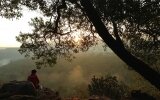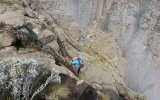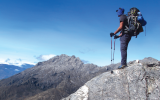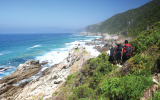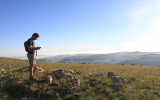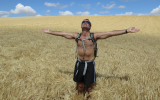- Magazine
- #readityourway
- Weekly Stories
- #shareyourstory
-
Adventure
- Abroad Travelling
- Africa Travelling
- Events
- Expos & Shows
- Festivals
- Fishing
- Free Diving
- Gliding
- Horse Riding
- Inspiring People
- Islands Travelling
- Kite/Windsurfing
- Motorbiking
- Motorised Water Sports
- Mountaineering
- Mountain Biking
- Off-road 4x4
- Off-road Motorbiking
- Paddling
- Performance Driving
- Photography
- Rock Climbing
- Rollerblading
- Sailing
- Scuba Diving
- Skateboarding
- Skydiving
- Snowboarding & Skiing
- Surfing
- Swimming
- Trail Running
- Wakeboarding
- Waveski Surfing
-
Sport
- Adventure Racing
- Fishing
- Free Diving
- Gliding
- Health & Fitness
- Horse Riding
- Inspiring People
- Kite/Windsurfing
- MMA
- Motorbiking
- Mountain Biking
- Multi-sport
- Off-road 4x4
- Off-road Motorbiking
- Paddling
- Performance Driving
- Photography
- Road Cycling
- Road Running
- Rock Climbing
- Rollerblading
- Sailing
- Scuba Diving
- Skateboarding
- Skydiving
- Snowboarding & Skiing
- Surfing
- Swimming
- Rugby
- Trail Running
- Triathlon
- Wakeboarding
- Waveski Surfing
- Lifestyle
- Calendar
Walking in the Clouds
Words & Photos: Darol Howes
Topic:
Hiking
It’s late afternoon and I'm standing below the statue of Moshoeshoe, waiting for a bus to transport me to the village of Menkhoaneng. This is the start of the Moshoeshoe Walk 2013; a mammoth 105 km hike that I am about to embark on over three days. Menkhoaneng is a fitting place for the start because this walk commemorates Moshoeshoe and the journey he took with his people to Thaba-Bosiu.
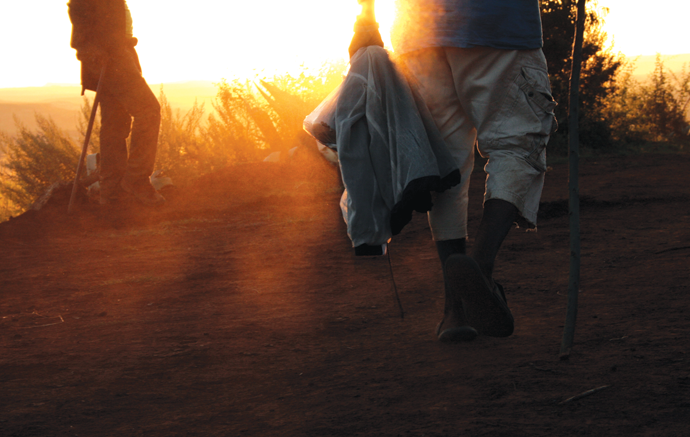
For those of you who don’t know, Moshoeshoe was born in Menkhoaneng and at 34, he formed his own clan and became a chief. He was a cunning and powerful leader who also united the Basotho, in Lesotho. He established his village at Butha-Buthe, where his settlement and reign coincided with the growth in power of the well-known Zulu King, Shaka. During the early 19th century, Shaka raided many smaller chiefdoms along the eastern coast of southern Africa, incorporating parts of them into his steadily growing Zulu chiefdom. Various small clans were forced to flee, including Moshoeshoe, who moved his settlement to Thaba-Bosiu, an impenetrable fortress that was never overcome, effectively saving the Basotho Nation from the threat of the invading Nguni clans.
The chaos just to get on the bus was a strong indication that this trip was going to get interesting. I wasn’t wrong. Relieved to be on my way, I was introduced to what was to become a common trend in the days to come; the locals singing in harmony to countless songs that they all somehow seemed to know. Despite the bus being crowded and stuffy, and the singing that went on and on, at no stage did I get bored. But I was pretty keen to get off this bus and start walking.
About a kilometre outside of Menkhoaneng, the rain started bucketing down and the bus was unable to go any further as the road had become impassable. Lucky me, my walk started early, in the rain and at night. Shortly into the walk, it became painfully obvious why the bus couldn’t make it. It was one seriously slippery road, covered in clay mud that wouldn’t let go or let you get a grip. What a start.
Day 1: Menkhoaneng - Malimong (24 km)
I awoke to chaos in the camp and no one was sure what was going on. The last thing I wanted to do was crawl out of my warm cocoon, but my curiosity got the better of me and I certainly didn’t want to miss breakfast. I learnt a valuable lesson this morning if I was to survive the walk. When you see a queue forming, jump in it, quick! Even if you don’t know what it is for. In this case it was meal tickets! So with a glorious sunrise in the background, I waited in line for breakfast with 600 other hikers, mostly from Lesotho, as well as some folk from Zimbabwe and South Africa. It was a ‘healthy’ combination of delicious traditional steamed bread called leqebekoane, with butter and a steaming cup of coffee or tea. Luckily, I had some snacks in my bag, otherwise I'd be pretty hungry by lunchtime.
After an erratic distribution of water and other amenities, we set off on a very wet, muddy and slippery trail to the royal Kraal that Moshoeshoe was born in, in Menkhoaneng, and effectively the start of our great adventure across the mountains.
Here we were addressed by the Deputy Prime Minister of Lesotho and given a brief history of Moshoeshoe and the importance of the trek we were embarking on. Fuelled by the great history and pride of the Basotho nation, we began the 105 km trek to Thaba-Bosiu.
Day 2: Outward Bound - Malimong (50 km)
I had been dreading this day as 50 km is a long way for anyone to hike in 24 hours. Based on stories from previous years, I was pretty sure that we would only get there by midnight. Anyway, after a great night at the Outward Bound Centre and more steamed bread, we hit the trail at around 5 a.m.
Having spent the better part of the morning trying to get some decent long-exposure shots of the 600 lights ascending the mountain, I found myself a good kilometre behind the backmarkers, in the dark … always fun. With a massive climb out of the valley still to come, I started jogging. Spotting some lights ahead, I stopped to take some shots of the spectacular sunrise. It was kind of fortuitous that I'd hung back, as one of the backmarkers was cramping: it was going to be a long day for him. I fixed him a rehydrate and hoped for the best. Now it was time to play catch up.
I eventually caught up to my friends at the top of a mother of a climb, which boasted absolutely amazing views over the valley below and a spot with some interesting history behind it. This was the place where Peete’s collarbones had been found. As strange as it sounds, on the voyage to Thaba-Bosiu, the elderly Basotho, one of which was Moshoeshoe’s grandfather Peete, were preyed upon by cannibals. Apparently, when they ate him, they left his head and shoulders so that he'd still be identifiable.
There rest of the day was long and the area very remote. The usual option for the backmarkers to jump in a support vehicle no longer existed, but there was an alternative. For R5 you could get a ride on the Taxi e boya, also known as the ‘hairy taxi’, to the next water point. This was a donkey or horse ride and a few people opted for what turned out to be a very picturesque ride.
I realised that there’s a reason why anyone who does this walk finishes it. Simply, you move as a group, leaving no one behind. This system works well and thank goodness too because let’s be honest, a 105km hike in three days is no ordinary walk in the park.
At the water point, a bus took the stragglers to camp, while the rest of us continued on what was going to be the longest part of the journey. Despite our already aching feet, we set a steady pace that would see us walking well into the night. Then, as they do every year, the men and women split up, with the women taking the lead. No one could tell me why this happens, just that it is tradition. As we struggled on in the darkness, the thought of getting lost was not an appealing one and everyone stuck close together!
As we were ambling up the last and seemingly never-ending hill, we heard a call in Sesotho coming from the valley behind us. I was alarmed when I heard the word ‘stretcher’ and a million thoughts went through my head, first and foremost was how do you get an injured person out of here? It was pitch black, remote and no vehicle would be able to make it down the footpath. The only option was a horse. Just then, out of nowhere, one of the organiser's from the walk shot past on a horse, followed by a group of hikers carrying a makeshift stretcher. Finally, after what seemed like hours, the stretcher-bearers appeared, carrying the man who had injured his back to the waiting ambulance. It had been a truly remarkable and brave rescue mission and I take my hat off to the hikers for getting him out of the valley safely in the most difficult of circumstances.
We finally reached the camp at midnight, having been on our feet since 5 a.m. I was pretty damn glad to see that my tent had already been erected by Beatrice and Kananelo, two of my friends silly enough to come along, who had somehow slipped ahead in the night. It had been a very long day.
Day 3: Malimong – Thaba-Bosiu (31 km)
The last day! Although it was a much easier day, our legs were tired and feet sore. However, the prospect of a real shower at home that evening was enough to lift my spirits and spur me on to the end. I think everyone else had the same idea, as there was certainly a sense of excitement in the air.
The highlight of the walk, for me, came right at the end and was very different to anything I’m used to. The hikers at the front slowed down and by the time we got to Thaba-Bosiu, all 600 walkers were together again. Then the singing and dancing started, growing in volume all the way to the finish in the village. Had it not been for my sore feet, I would have been toy-toying and ululating along with them.
With the closing ceremony over and local music star Stofla on stage, it was time to say our goodbyes. I'd made many new friends, ascended 3,215 m, walked at an average of 3.8 km per hour and had what was most certainly an experience I’ll never forget; the Moshoeshoe Walk 2013, tick.
So if you’re keen for a 105 km hike with a difference, I recommend signing up in 2014. One thing’s for sure, there’s a very good chance that you won’t have been on anything like this before.
|
|
|
|
|
|
|
|
|
Issue:
Issue 25 May '13

